Quick Post
I’m just travelling around a bit at the moment and I’m unable to format or research these patents thoroughly. I’m sure some of you will tear it apart. A better translation would be appreciated.
This Japanese site has posted some Canon patents he/she has found.
This is a direct email quote
Based on his investigation Canon made following patents.
EF300/F4 IS II with plastic lens.
http://egami.blog.so-net.ne.jp/2009-12-17
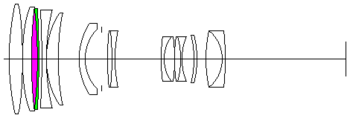
This would be a welcomed lens by many.
EF70-210/F4 IS II with plastic lens
http://egami.blog.so-net.ne.jp/2009-12-12
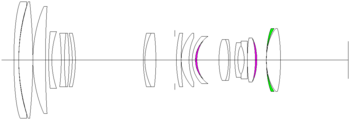
Not sure this lens needs an update yet.
EF300/F2.8 DO IS and EF 400/F4 DO IS with new double DO and IS
http://egami.blog.so-net.ne.jp/2009-12-02
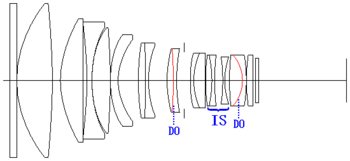
A lot of DO patents popping up. A lot of people ask for smaller and lighter lenses.
EF 15-24/F3.5-4.5 Fish eye zoom (not EF-S)
http://egami.blog.so-net.ne.jp/2009-11-27
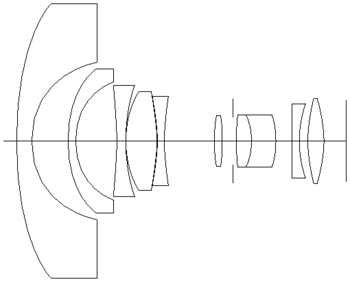
I think this would be a great fisheye solution. It wouldn’t cost a lot at first sight.
CR’s Take
All make some sense outside of a new 70-200 f/4L IS.
View more lens patents here
Thanks Mitsu
cr
|
When you purchase through links on our site, we may earn an affiliate commission. Here's how it works. |


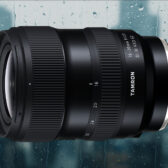

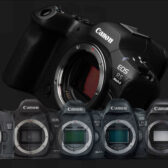

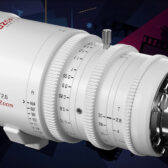


probably dummy question, but what is that DO. I’ve seen that these lens are bit shorter in physical size than non-DO lens, but what about picture quality?
I’m not so familiar with the technology, but is the plastic really as clear (see-through) as glass and gives similar performance and picture quality?
But good to see that new lens are coming!
More DO glass ? hmm if its sharp & bright I’d say yes
DO stands for Diffractive Optics, you can google around to find more about it, but in essence the DO element inside a lens enables Canon to make the lens physically smaller & lighter, at the cost of loosing a bit of IQ (mainly contrast, I think).
I’d be interested to know whether that ‘with plastic lens’ part is a simple translation error, and thus means that the lenses will be made of engineering plastic as the new 100mm IS macro; or if it is indeed intended to mean that there will be a plastic optical element inside..
There is nothing inherently wrong with using plastic for lens elements. Plastics like CR-39 resin have almost identical optical properties to crown glass, but only weight half as much. It is very commonly used for eyeglass lenses. Because plastics are easily moulded, there are probably applications where cost and weight savings can be made without compromising the image quality in camera lenses.
According to Wikipedia (so it must be true), uncured CR-39 resin was used to protect the fuel tanks in B-17 bombers from flak during WW2. With a pedigree like that, wouldn’t it be cool to have it in your camera lenses. You could use that fact to impress chicks at parties.
Is there any time relation between the release of a patent and the release of the final product?
Or:
When does that gorgeous-sounding Canon EF 300 F/4 L IS USM II enter the stores?
“You could use that fact to impress chicks at parties”
LOL!
A 2,8/300mm DO? If Canon really does this and therefore discontinues the non-DO 2,8/300mm, that’ll surely let the second hand prices of the non-DO explode. Better I’d get myself one… ;-)
“I think this would be a great fisheye solution. It wouldn’t cost a lot at first sight.”
Oh fisheye, the Lady Gaga of lenses, seemed like such a good idea when I saw it first but so over it in the next five minutes… Honestly, the 60s are over, just get a wide angle and if required distort it in PS.
It looks as if Canon wants to move away from fluorite elements for dispersion correction. From the coloring, it appears that two different types of plastic are used in the 300f4 and 70-200f4. I agree that plastic does not have to have worse optical properties than glass – if the surface treatment is up to par. IMHO moulding alone is not good enough.
In the new 300/400 DO design, the DO elements are more to the rear than in the current 400 DO. That could mean a gain in size, but not so much in weight. I expect the new 400 DO to be heavier than the current one. Maybe (hopefully) the new position of the DO elements solves the problem of the degraded contrast.
Canon will certainly NOT discontinue the current 300f2.8 if the new design has inferior IQ, so I would not count on the price of second hand 300f2.8’s going up; but that is just my private opinion.
Plastic and DO are not the same thing.
Plastic is a good way to reduce cost without reducing IQ. However the lens exposed to the outside world should remain glass as they are harder and hence more scratch resistant.
Patents do not necessarily mean that there will be a product at all.
Patents are to protect potential ideas AND to stop others claiming you’ve nicked their ideas. Patents do not automatically mean products follow.
More DO sounds good, but i think 3rd parties need good DO offering to make Canon’s more competitive.
I don’t get the fisheye zoom – if wanted i’d find out how in PS.
The 70-210 but DO lighter & cheaper sounds interesting.
If DO works so well at longer lengths why not a 800MM DO for the length and cost of a 400mm conventional lens?
Thinking a little about the 70-210(L?) IS, I agree that optically it is not one that needs updating. So the question then is why else would it be changed? A google translation of the linked blog suggests the plastic elements will replace the flourite elements, and probably the UD elements too. From my understanding, the flourite elements are very expensive to manufacture. If a cheaper but effective alternative is found, that could help reduce the costs, particularly so for bigger lenses.
I believe that DO is Canon’s own technology and I doubt they’d be very eager to let third party makers get their hands on it.. so no licensing, no 3rd party DO lenses.
BTW: No DO elements for the 70-210mm, just plastic -_-
Yeah maybe they can come out with a L-ite super teles. 500 f/4 L-ite for $3000. 300 f/2.8 L-ite for $2000. Etc. Longest shot for sure.
the fisheye makes no sense in my opinion
id rather like a 8-15
at 24 you dont really have a fisheye effekt anymore
but a 8-15 would make sense
you can have a circular 8mm and a diagonal 15mm
still no 400 5.6 is or 200-400 4-5,6 is :(
that would be a perfect lens in addition to my 70-200
Wouldn’t all these DO lenses be way more expensive than the non-DO ones that are out now? If not, why is the current 400 DO so expensive?
Bokeh is kind of odd-looking in DO lenses as well.
Has it actually been proven that DO reduces weight?
the 70-300 DO vs 70-300 IS comparison: DO is heavier.
Unfortunately there’s no direct 400 DO vs non-DO to compare… but do we know for sure it would be lighter and not just more compact? FWIW, the 70-300 DO’s compactness advantage is only really noticeable in the amount of space it takes in the bag – when used, it can be the same size
If you remember Canon used to have the EF 70-210mm F4. Not an L series lens. This would probably an updated version of that lens but won’t cost as much as the EF 70-200mm F4L.
Because you’re paying not to break your neck when accidentally hang your camera on your neck and forgot you had the 400L with it.
The 70-300DO has a metal body. The 70-300IS is plastic.
Its much lighter than the 400mm F2.8L and the 300mm F2.8L. Well still its no direct comparison due to the difference in max aperture.
Canon did not invent DO, but how they solve problems can be protected in a patent.
Actually, the 300mm f/2.8L is a pretty good reference. The diameter is almost the same as the 400mm f/4 DO (same size front elements), and the length is similar (the 300mm is bit longer, actually), but the 400mm f/4 DO weights 4.3lb, compared to 6lb for the 300mm f/2.8L.
A 400mm f/4 built with “conventional” technology would certainly be longer and heavier than the 300mm f/2.8L.
No idea why the DO technology is so expensive.
We will see if Canon really builds these, when they become available, and at what price. An affordable 500mm f/4 DO would be my dream…
The 70-210mm f/4 IS makes sense because as the megapixel count goes up you need lenses that can resolve much more lines, that´s why Nikon had to introduce their new lenses and Canon will have to catch up with their own sensors too, also the diffraction limit of the lenses will have to be pushed in order for it to behave better with those sensors crammed with megapixels.
:/
It says in the patent that the drawback to using plastic is that its size changes with temperature. Other plastic lenses are incorporated to counter image aberrations due to that.
Apparently the resins used in the image are “UV hardened” and “fluorene” based ones.
DO is meant to reduce the physical size and not the weight. :/ And what´s with the sissyness of light weight lenses you people are too used to the plastic fantastic crap…
Of course, the wonders of computational optics would also allow you to do the exact opposite: Take a relatively cheap fisheye lens and turn it into what would be a much more expensive UWA rectilinear lens with post.
(Manufacturers are already going down this route with compacts, with the processing done on-camera; see S90, etc.)
My guess would be DO cost is a combination of low manufacturing quantity and the premium Canon can charge for its benefits. Both should subside as it becomes more commonplace (but the latter won’t really go away if Canon has the technology cornered in some way.)
Except the 70-200 f/4 is already one of the best lenses in Canon’s lineup in its ability to resolve detail. My bet would be that (if it ever is actually produced) the 70-210 f/4 will be either a cost reduction move in one of Canon’s most popular lenses or a non-L aiming at a different market segment.
The so-called diffraction limit is a direct physical consequence of the aperture size. Unless we bring up exotica like meta-material “apertures”, there’s absolutely nothing any lens design can do about it.
I took a look at the source post, it is indeed plastic lenses. The main downside (according to the source) is that plastic lens performance can vary with temperature, and therefore the patents use two different types of plastic to cancel out the effects (highlighted in purple and green in the pics.)
Theres a pic floating around, but Canon did demonstrate a conventional 400mm f/4L IS when they announced the DO one, showing the difference in size and weight
http://www.dpreview.com/news/article_print.asp?date=0009&article=00090604canon_400do
There it is, scroll down a bit…
what parties are you attending??? lol
Good point. Everyone stuck an L on the end of this one and I got swept away by it too.
But we can still all dream of more affordable L lenses :)
well if they manage to make plastic elements perform as well as the fluorite then this is going to be a revolution (especially if they pass on the savings to the consumer). I’d love to see a 500/4 L IS plastic that at least matches the current lens… DO…meh, don’t mind the extra size as long as I get the bokeh and contrast of the traditional lens… if they can get DO lenses to match them then that could be cool though frankly if I had to choose between size and cost, Id go for cost as long as optical performance was identical (big hypothetical)
Lighter and smaller professional lenses are always nicer, especially if you do air travel at all.
Bring on the plastic!
DO lenses are harder to make i believe, and if they have so much trouble with a 400 f/4 DO, i think they just keep the technology in production to develop, but don’t expect to sell many lenses with it (explaining the incredibly high price). If i am correct, DO lenses look like a Fresnel lens, so they are grooved. Doing something like that to a 800 mm lens might result in too much disfigurement, and doing it for a 100 mm lens may not yield enough results. (if i look at Canons own site, it looks like it’s a triple lens, with the middle being the DO part. Making that in a 15cm wide plate of glass might be too much at the moment)
So far their choices have been defensive at least (400/4 is right between the cheap, and light 5.6 and the expensive, razor sharp, but heavy 2.8), and until Nikon or Sigma produces DO stuff, i think it’ll stay that way.
Why it’s so expensive? It’s new tech, Canon wants to get development costs back, while slowly trying to evolve production of these lenses. The first of these will be incredibly expensive, and then, when they get the hang of it, they can lower production cost (yields go up), and add more DO lenses. Until then, you’ll be paying through your nose for one.
I have the current 400mm F/4.0 DO IS lens and love it. It is (relatively) short and light, and I’ve had excellent results with it. Seems to me that the bokeh complaints are from people who haven’t used the lens. As you go up in the higher telephoto ranges, the background bokeh is affected at least as much by atmospheric conditions as lens character, as your subjects are typically farther away. I shot this photo of a grizzly bear in Alaska last year with the DO lens and am very happy with it. Check it out – http://www.flickr.com/photos/26317521@N00/3726024358/sizes/l/
That 300mm f/2.8 diagram looks suspicious to me. The second element looks too strong (too short of focal length).
Another rather nasty property of plastics is for it to darken with age and heat cycling. Some plastics last longer, but its always a tradeoff, you can’t have everything you want.
I have a large plastic lens from a B25, made in the 1940’s still in its original crate. Its absolutely beautiful, crystal clear with no darkening. As near as I can tell, searching parts lists and drawings, it was a test item and never went on production B25’s. It is a very interesting relic though. I hate to think what something like this cost in today’s dollars.
“To make a lens smaller and lighter, the spacing between the elements is shortened and the refractive properties of the front and rear lens groups are made more pronounced. This, however, results in increased chromatic aberration. To resolve this problem, the Multi-Layer Diffractive Optical Element is located within the lens to cancel out the occurrence of chromatic aberration. Compared with conventional super telephoto lenses, the prototype EF 400mm f/4 DO IS USM lens, measuring 233 mm in length, is about 26% shorter and, weighing 1,930 grams (including the 140 gram tripod collar), about 36% lighter. ”
It does help reduce the weight. As you grow older, lighter lenses are welcome.
Yes, DO is just another name for a Fresnel lens – the same thing used in lighthouses since decades, but pushed to much better image quality. When you look at the cross section of a DO element (in the patents or in Canon’s description of the 400 f/4 DO), you see a sawtooth-like structure. The quality of the image will depend critically on the details of the “teeth”, in particular, on how sharp you can make the edge.
I would expect that DO elements are easier to make for long focal lengths – the shorter the focal length, the steeper the “teeth” become towards the outside of the lens. For the same reason, they are easier to make for moderate apertures, i.e. a 400 f/4 is much easer to make than a 400 f/2.8.
Hey, he’s got his priorities in the right place, regardless of the type of parties he goes to!
Or if you are physically disabled and can’t lift such heavy lenses…
Why else would you blow all that money on lenses!? haha